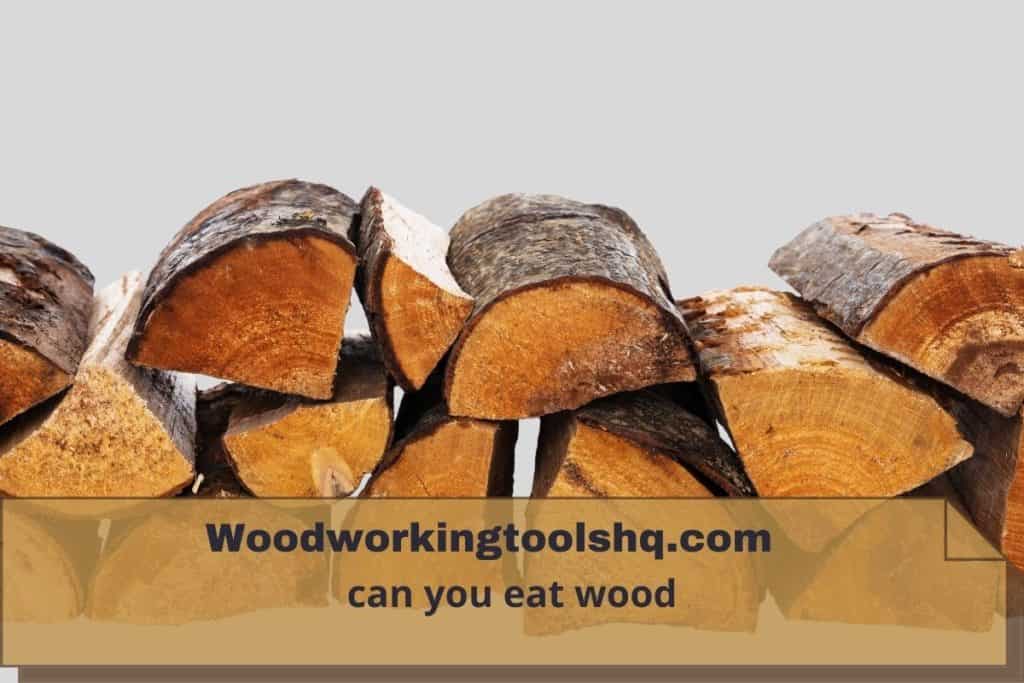Wood is a common material used in construction, furniture, and even as a source of fuel for fires. But can it be eaten as a food source?
While it may seem like a strange concept, some animals, such as termites, do consume wood for nutrition. But what about humans? can we eat wood?.
1. The Straightforward Answer: No, You Can’t Eat Wood
Let’s get right to the point – wood is not something you should be adding to your diet. While it might be tempting to imagine yourself as a lumberjack with a side of timber, wood is predominantly made up of cellulose, a complex carbohydrate that humans lack the enzymes to digest effectively.
Cellulose, the main structural component of plant cell walls, gives wood its incredible strength and durability. But unfortunately for us, our bodies lack the necessary tools to break down this complex molecule into simpler sugars for energy. While some animals, like termites and certain bacteria, have evolved to possess the enzymes needed to digest cellulose, humans are not among them
2. Nutritional Value: Limited, But Present
Wood is primarily composed of cellulose, a complex carbohydrate that our digestive system struggles to break down efficiently.
While cellulose itself doesn’t provide much in the way of nutritional value for humans, some insects and animals have specialized digestive systems that allow them to extract nutrients from wood.
In fact, certain insects, like termites, have symbiotic relationships with microbes that help them digest cellulose and derive energy from it.
3. Digestibility: The Challenge
Our human digestive system isn’t designed to process wood effectively. Unlike termites, we lack the necessary enzymes and microbes to break down cellulose into digestible components.
This means that even though you might be able to physically consume small amounts of wood, your body won’t be able to extract much nutrition from it.
Additionally, the rough texture of wood could pose a risk of splinters and damage to your digestive tract.
4. Health and Safety: Not Recommended
Before you start thinking about adding wood chips to your salad for extra crunch, consider this: ingesting wood could lead to potential health hazards.
Apart from the risk of physical damage to your digestive system, wood could also be treated with chemicals, paints, or finishes that are toxic to humans.
Consuming wood from unknown sources might expose you to harmful substances that can have serious health consequences.
5. The Culinary Aspect: Wood-Influenced Foods
While eating raw wood might not be advisable, wood does play a role in the culinary world. Smoking and infusing foods with wood flavors is a common technique used to enhance the taste of various dishes.
Wood chips, such as those from fruit trees or hardwoods, are often used in smokers to impart a unique smokiness to meats, cheeses, and even cocktails.
This culinary application of wood allows us to enjoy its aromatic qualities without the digestive challenges.
What types of wood are safe to eat?
According to a research, there is no wood known as a nutrition source of humans. While some animals like termites consume wood for nutrition, but there is no type of wood that humans can digest wood.
Wood is primarily composed of indigestible cellulose, which cannot be broken down by the digestive enzymes in our gut. Therefore, it is not safe to eat wood as a food source.
However, some wood products are safe for human consumption. Wood pulp is sometimes used as an additive in processed foods like ice cream and yogurts
[But still, Wood ash can be used as a flavoring agent in some recipes like pickled vegetables. Additionally, some wood finishes like tung, mineral, linseed, olive, or walnut oil are food safe and can be used to finish wooden bowls or cutting boards
What if i mistakenly eat wood?
If you mistakenly eat a small amount of wood, it is unlikely to cause any significant harm. Your body will likely pass it through your digestive system without issue.
However, if you consume a larger amount of wood or experience any symptoms such as abdominal pain, nausea, or vomiting, it is recommended to seek medical attention.
Additionally, if you suspect that the wood you ate may contain toxic compounds, seek medical attention immediately.
What happens when you eat wood?
Safety Concerns of Eating Wood:
While wood may not provide any nutritional value, there are also significant safety concerns to consider.
Eating wood can cause physical damage to the digestive system, including blockages and tears in the digestive tract.
Additionally, wood can also cause damage to the teeth, leading to cavities, fractures, or even the loss of teeth.
Furthermore, wood can also harbor harmful bacteria, fungi, and parasites, which can cause serious health problems if ingested.
For example, some species of fungi found on wood can produce toxic compounds known as mycotoxins, which can cause a range of symptoms from nausea and vomiting to more serious health issues such as liver and kidney damage.
Nutritional Value of Wood:
As stated earlier, wood does not provide any nutritional value to humans.
This is because the cellulose fibers that make up the structure of wood cannot be broken down by the digestive enzymes in our gut.
As a result, wood simply passes through the digestive system without being absorbed, providing no energy or nutrients to the body.
Alternative Sources of Nutrition:
Given the lack of nutritional value and safety concerns associated with eating wood, it is recommended that individuals seek alternative sources of nutrition.
A balanced diet that includes a variety of foods from different food groups can provide the necessary vitamins, minerals, and nutrients needed to maintain good health.
Fruits, vegetables, whole grains, lean proteins, and low-fat dairy products are all excellent sources of nutrients that can help keep the body healthy and functioning properly.
Additionally, it may also be helpful to speak with a healthcare provider or registered dietitian to determine the specific nutrient needs for your individual needs and develop a diet plan accordingly.






